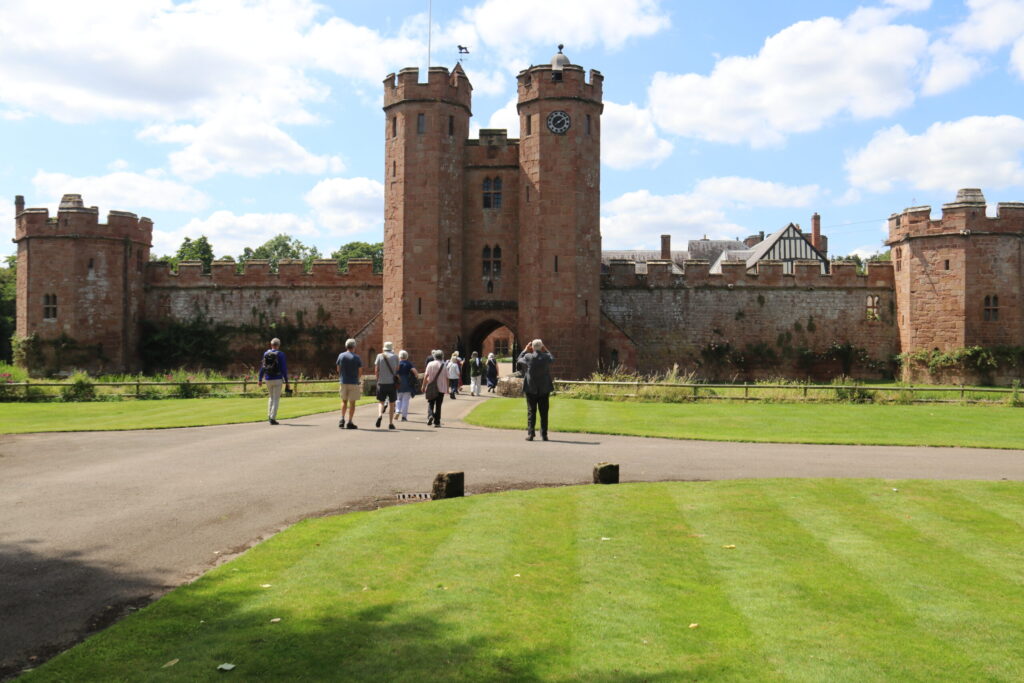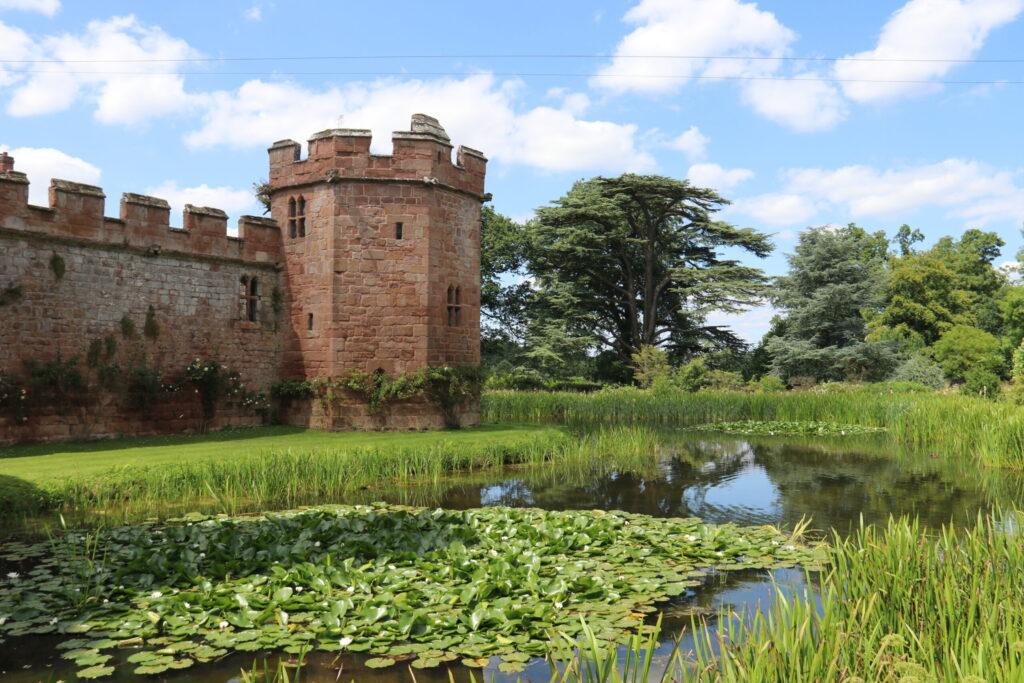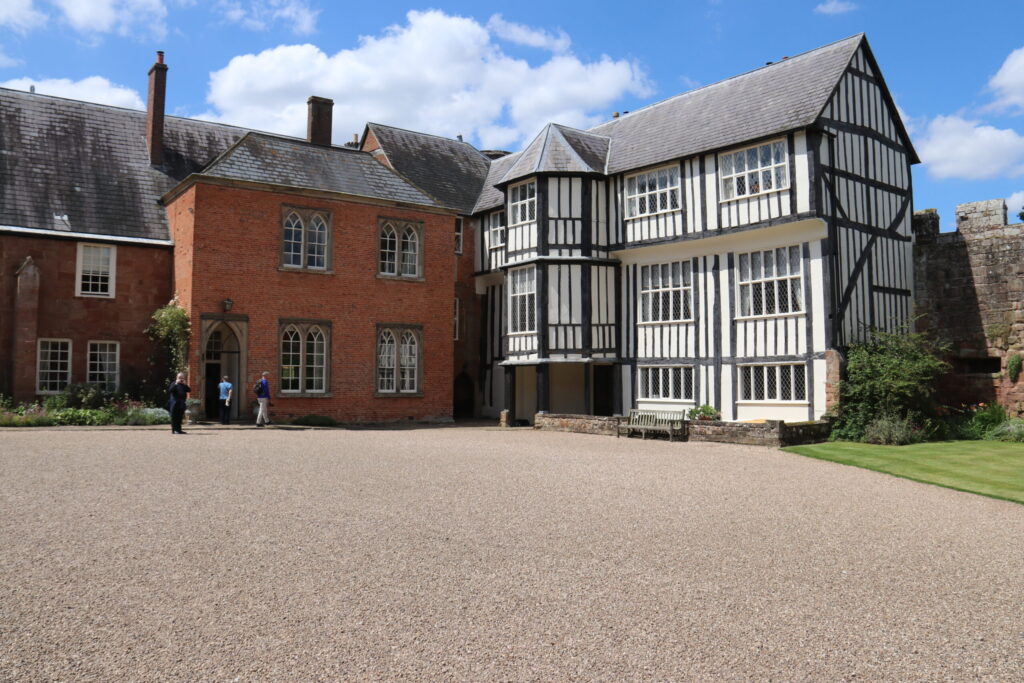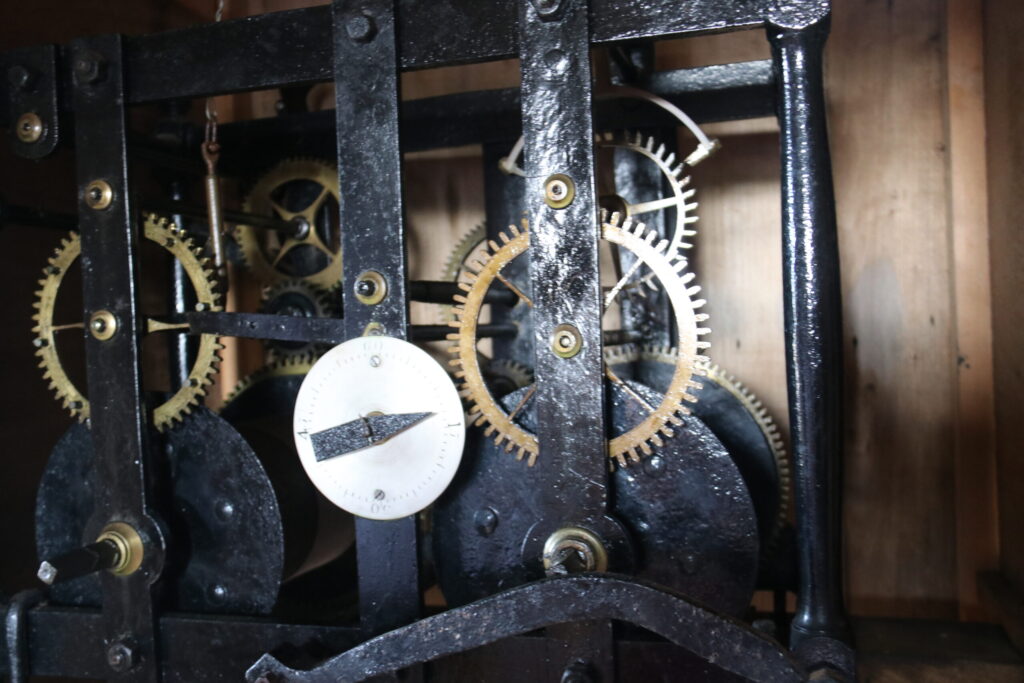
A score of members of the Coventry Society were fortunate to visit the historic Maxstoke Castle during July.
The castle was built in 1345 by Sir William de Clinton. There is no record of the construction, but a License to Crenellate was granted after the building was completed in that year.
The building passed through the hands of the Earls of Buckingham, who acquired it by swapping a manor in Northamptonshire for it. When the Buckinghams fell out of favour, the building was forfeited to the Crown and ended in the hands of Thomas Egerton, who was Lord Chancellor at the time of Queen Elizabeth I.
The castle was purchased by Thomas Dilke in 1599 and remains in the same family up to today. We were shown around the castle by Edwina Fetherston-Dilke, whose husband’s family have owned the castle for four hundred years.
The castle is in the form of a perfect square of 60 yards, by 60 yards, with octagonal towers at each corner and a gatehouse in the middle of the east wall. It is surrounded by a moat and within the walls is a courtyard, with Elizabethan and Georgian living quarters on one side of the courtyard.


The castle is built of red sandstone, similar to much of ancient Coventry and in places is suffering the same problem of weathering. It is a Scheduled Ancient Monument and a Grade I listed building.
The current owner has studied its history and feels that it was never really a castle, in the sense of being built for warfare. It was more like a stately home, built in the then fashionable style of a castle and moat.
In fact. the castle has never come under sustained attack, one of the reasons why it is in such good condition today. A single cannon ball was fired at the castle but missed and ended up embedded in a nearby tree. The cannonball can be seen on display in one of the state rooms.
The castle was occupied by Parliamentary forces during the Civil War, the family having contrived to stay neutral to preserve their property.
The Castle was used by the Red Cross during the second half of the First World War, as an auxiliary hospital, for soldiers wounded on the Western Front.
During the Second World War the Castle was requisitioned by the Ministry of Aircraft Production for the remote storage of aircraft engines, supplying the new factory near Castle Bromwich where Spitfires were made.
Amongst the antiquities on display is a 15th-century chair upon which it is said that Henry VII was crowned after the Battle of Bosworth in 1485. There is also a table owned by Sir Everard Digby around which the Gunpowder Plot was planned in 1605, and a ‘Whispering Door’ (two doors with a common jamb) brought from Kenilworth Castle.
One of the fascinating historical features of the castle is the Clock on the gatehouse tower. The clock is unusual in only having one hand. We were able to inspect the mechanism, which chimes on the hour. The gardener has the weekly task of winding it up and lubricating the mechanism.

Adjoining the castle is Maxstoke Golf Course, on what was once the castle’s deer park. Apparently, deer can still sometimes still be seen there, visiting their ancestral home.
It was a fascinating visit to a nearly intact castle that has been lived in continuously since the fourteenth century, and by the same family for four hundred years.
You can find out more here.
